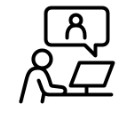Cloud computing is increasingly becoming critical to business, especially as digital technologies like IIoT become widespread. Gartner predicts that in the next year, the cloud-based Software as a Service (SaaS) market will grow 85%, five times faster than traditional software. For industrial companies who want to use the IIoT for predictive maintenance, cloud-based SaaS solutions offer tremendous opportunities that have the potential to disrupt the equipment maintenance world.
The benefits of IIoT predictive maintenance are reduced downtime, fewer emergency repairs, lower cost repairs, and increased asset availability for production and service delivery — all leading to increased revenues.
But today, predictive maintenance technologies are still only acquired, and used, by a few. This is because of the high cost of infrastructure, lack of access to data and analytics, and the training and skill required for personnel managing these predictive programs.
The use of cloud and shared infrastructure, and putting data from assets and sensors in one place and in a consistent form, makes it possible for maintenance experts and data scientists to collaborate and provide insights across organizations. It also makes it possible to benchmark performance across assets, locations, and processes. With continuous benchmarking and performance monitoring, areas for improvement are identified and learnings, including predictive algorithms, can be shared and applied across similar environments and processes. (Please read IIoT for Predictive Maintenance and Big Data for further discussion on sensor data analytics for predictive maintenance).
Making predictive maintenance applications available in the Cloud as a Software as a Service (SaaS) makes it easier and faster for companies to adopt advanced analytics, while simultaneously reducing the burden and cost of keeping these applications up-to-date. This also makes it easier for personnel and authorized consultants to access the same tools and data. In this way, innovation will be accelerated by enabling algorithms to be shared and improved upon.
With data now in a consistent form and in one place, new analytics and revenue-generating products can be created in partnership with solution providers and suppliers. For example, backed by data, tailored extended warranty and premium service programs can be offered for individual assets and asset classes.
In order to deliver these services data, such as vibration data and ultrasonic data, and relevant asset parameters and algorithms, need to be combined in a platform capable of handling large streams of temporal data being sent by sensors in the field. Processing this real-time data, and drawing on historical data, enables the predictive maintenance system to anticipate critical situations before they happen, and send out the appropriate alert when a problem is identified.
Recognizing that data about assets and production processes are highly sensitive, cloud and SaaS providers will need to continue to demonstrate the measures they will take to protect their customers’ data. Some of these measures include the adoption of industry best practice internal and external audits and independent third-party certifications, such as ISO 27001, ISO 27018, CSA/CCM, ITAR, HIPAA, SOC 1, and SOC 2.
Organizations that adopt cloud-based SaaS solutions for predictive maintenance can significantly reduce costs associated with hardware, software, and maintenance of traditional solutions and can break down silos of data. Savings can be reinvested in sensors and the expertise needed to deliver continuous improvements in availability, safety, efficiency, and effectiveness.
SaaS and IIoT combined will lower the cost of entry for the use of already well-established predictive technologies to a much wider market of potential users – smaller manufacturers in particular. They can adopt a predictive approach to maintenance that will enable them to and take advantage of the gains in process reliability and availability now available only to larger, deeper-pocketed, companies. This use of SaaS and IIoT can also eliminate the need for users to have the higher level of analytical knowledge that these technologies demand. In turn, that alleviates pressures on hiring and on training budgets for these highly specialized, and often hard to retain, technicians. Predictive maintenance becomes more widespread and achieves greater asset performance for all of its users, potentially providing an even greater competitive advantage in lower-margin businesses.
AuthorInformation:
Przemek Tomczak
Przemek Tomczak is Senior Vice-President, Internet of Things and Utilities at Kx. Previously, Przemek held senior roles in the Independent Electricity System Operator in Ontario, Canada, and top-tier consulting firms and systems integrators. Przemek has a CPA and a background in business, technology, and risk management.
Click the link for more company details – www.kx.com
James Reyes-Picknell
James Reyes-Picknell is a highly experienced RCM practitioner familiar with various methods of executing RCM. He has written numerous articles and a book on the topic published in 2000. His RCM experience includes naval, aviation, utility, natural resource, manufacturing, and processing industrial environments. He is the author of the best-selling book, “Uptime – Strategies for Excellence in Maintenance Management” now in its 3rd edition (2015) and widely used as a reference in certification programs and post-graduate continuing education. Uptime’s well-proven and successful Pyramid of Excellence uses RCM as a centerpiece for choosing excellence. James is a registered Professional Engineer, Certified Management Consultant, Certified Maintenance and Reliability Professional, and a Certified Asset Management Assessor.


